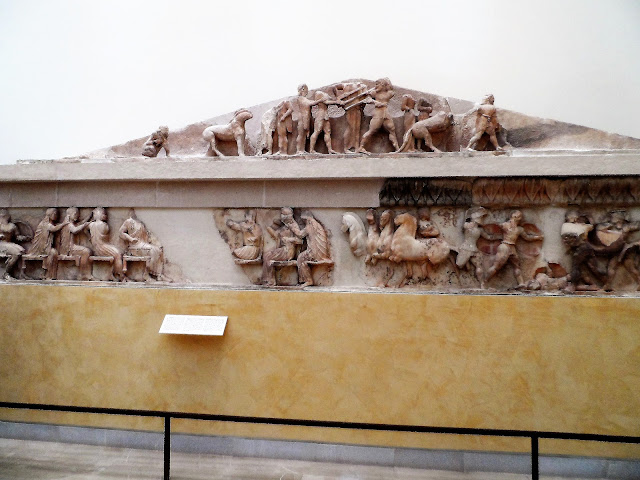We are currently doing some more wild camping
down by the sea at Pachi (N37.97313 E 23.36137), overlooking the tiny island of Salamis.
 |
| Sonny, the motorhome in his spot for the night and enjoying the cool sea breeze |
We left the marina at Itea early this morning to travel
the short distance to Delfi. We got
there at 9am and it was already busy with tourists already!
The ancient site of Delfhi is set in a beautiful
natural setting, framed on all sides by the Parnassós Mountains (a popular ski
resort for Greeks).
 |
| Delphi |
For over a millennium a steady stream of pilgrims
converged on Delphi to seek divine direction in matters of war, worship, love
and business. For a small fee, they
would submit their questions inscribed on lead tablets, and the Pythian
priestess would chant her prophecies from a tripod positioned over the oracular
chasm. Delphi became one of the major sanctuaries of Greece, its oracle widely
regarded as the most truthful in the known world.
Entering the Sacred Precinct (Temenos of Apollo) you come to the foundations of memorials and treasuries to the
Temple of Apollo, where gold, bronze and painted marble figures once stood, some of which are now housed in the museum.
 |
| Treasury of the Athenians |
Athenian Stoa on the right – which housed trophies from an
Athenian naval victory of 506 BC.
Approaching the temple of Apollo
The Temple of Apollo, dates from the mid-fourth
century BC.
 |
| The Temple of Apollo with the Tripod of Plateans on the left-hand side. |
The Theatre, built during the fourth century BC
had a capacity of 5,000 seats and is associated with Dionysos the god of
ecstasy, the arts and wine who ruled Delphi during the winter when the oracle
was silent.
The Stadium is situated high up in the pine
groves and was levelled in the 5th century BC to a length of 178 metres,
and seated 7,000. It is where they held the Pythian Games, held in honour of Apollo every 2 years after each Olympic Games.
Inside the Delphi’s museum are collections of
sculptures spanning the Archaic to the Roman eras. Along with pottery, friezes and various
treasures.
 |
| The Sphinx of the Naxians (565 BC) – body of a lion, wings of a bird and face of a women. |
 |
| A collection of friezes of the gods |
The Omphalos was found northeast of the
temple of Apollo. According to mythology
the Omphalos marked the centre of the earth, the point where the two eagles
released by Zeus from two opposite ends of the world eventually met at Delphi.
The most famous exhibit is the Charioteer, one of
the few surviving bronzes of the 5th century BC.
 |
| The Charioteer |
Leaving Delfi at just after 12:30, temperatures had reached 38°C so we headed south to the sea to enjoy a nice cool dip in the beautiful clear sea waters! Tomorrow we move on to mighty Athens.
Sally x







No comments:
Post a Comment